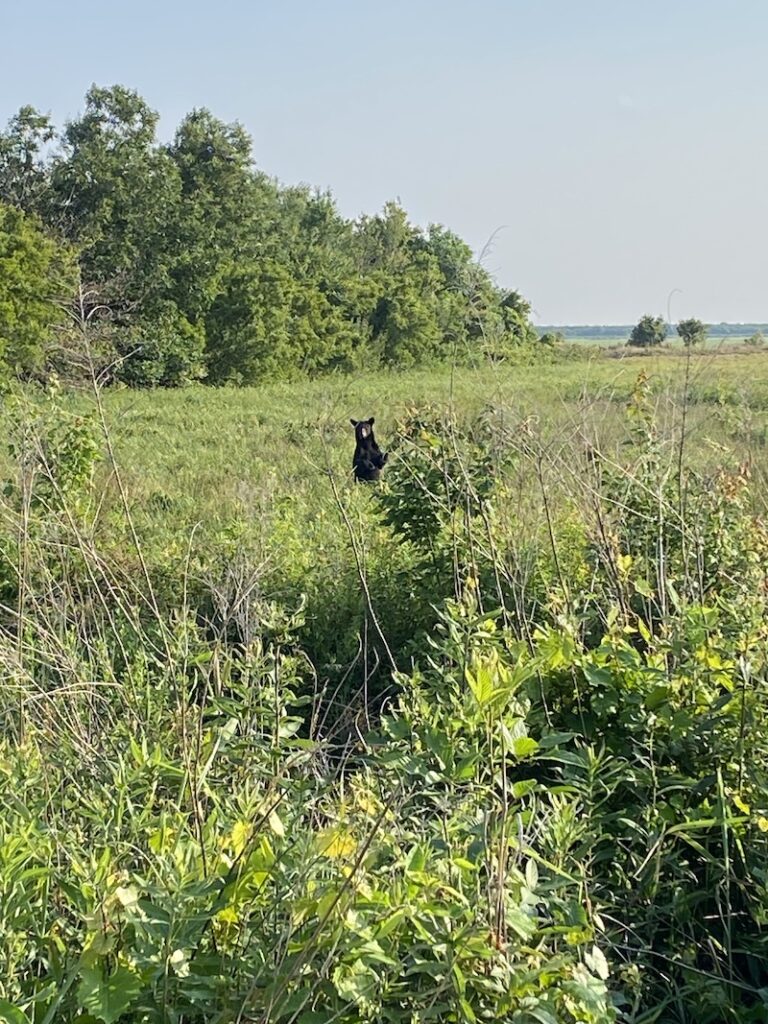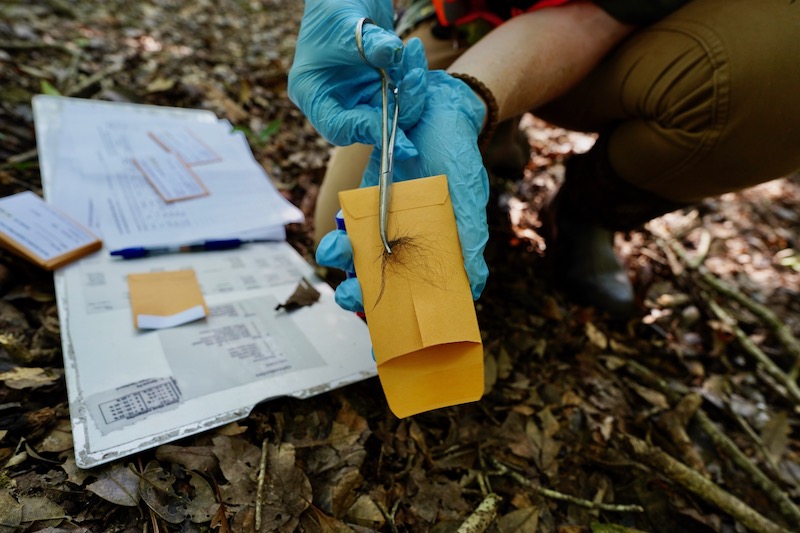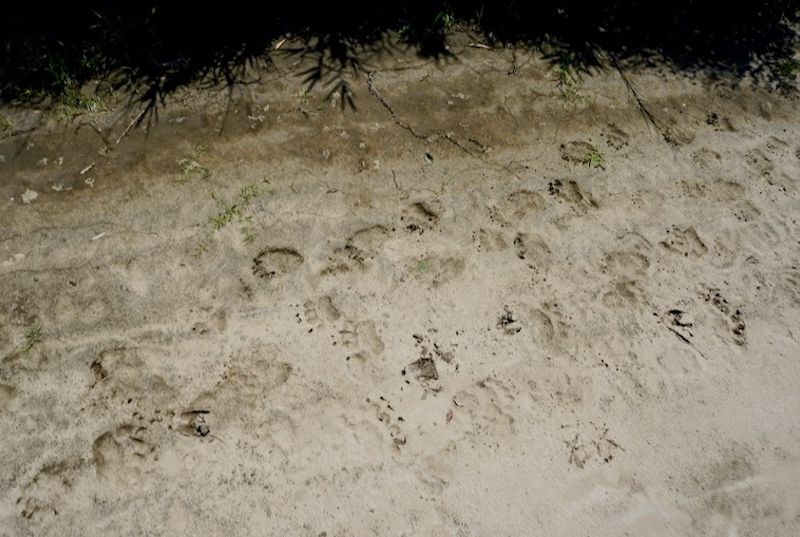Black Bear Project is a Roaring Success

The Coastal Black Bear Project had a “bear-y” busy summer of data collection.
The multi-year project studies black bears (Ursus americanus) in eastern North Carolina. The project is a collaboration with North Carolina State University, Mississippi State University and the North Carolina Wildlife Resources Commission (NCWRC). The NCWRC will be using the results to update the North Carolina Black Bear Management Plan and set population objectives for the species.
“On the project, we jokingly called them ‘beach bears’ or ‘swamp bears’ to distinguish them from the population in the mountains of western North Carolina that everyone is more familiar with,” says Caitlin Brett, the research assistant on the project and a staff member in the Department of Applied Ecology. “It’s fun to share with people how diverse their habitat can be and that there’s this separate population out on the Coastal Plain.”


Brett adds that there used to be black bears across the state, but they faced substantial habitat loss, unregulated hunting and other pressures that limited populations to remote pockets of the mountains and swamps.
“Now we’re seeing those populations are rebounding, largely due to decades of conservation efforts by the NCWRC,” Brett says.
Researchers are using hair samples to understand the coastal population’s abundance, density, distribution and genetic profile. Over the summer, the team collected over 9,000 hair samples from over 600 baited sampling sites across the northern half of the study area, which extends north and east of Greenville, North Carolina. Next summer, the team will collect data from the southern half.




“You can identify down to the individual bear and tell the sex from a hair sample,” Brett says.
Brett is coordinating the fieldwork for the project, Dana Morin, an assistant professor at Mississippi State University, is genetically analyzing samples with her master’s student, Fabian Jimenez, and Nathan Hostetter, an assistant professor in the Department of Applied Ecology, is creating population models. Colleen Olfenbuttel, the state’s black bear and furbearer biologist, is the technical contact for the NCWRC.
“…I got to experience first-hand the physical and mental rigor of wildlife research in the field.”
In addition to collecting valuable information for the NCWRC, the project has given students across the nation the opportunity to gain hands-on wildlife research experience in North Carolina. This summer, the project hired over 20 technicians, including College of Agriculture and Life Sciences undergraduate student Andi Aguirre Salazar, who’s studying biological and agricultural engineering with a minor in applied ecology.
“As a technician, I got to experience first-hand the physical and mental rigor of wildlife research in the field,” Aguirre Salazar says. “I developed a strong feeling of empowerment in my physical capabilities, and I grew to love how often I had to face the sweaty, exhausting discomfort of the outdoors head-on. My favorite aspect of work was the sheer excitement of seeing wildlife, especially bears.”
- Categories:


